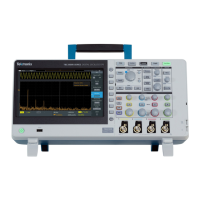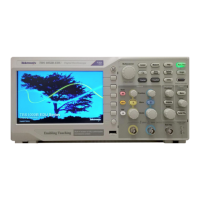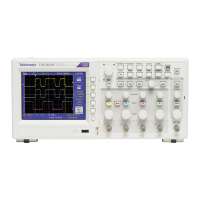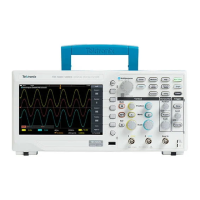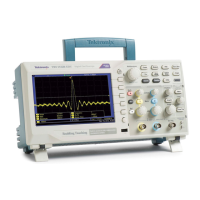Command and Query Structure
Commands consist of set commands and query commands (usually simply called
commands and queries). Commands change instrument settings or perform a
specific action. Queries cause the instrument to return data and information about
its status.
Most commands have both a set form and a query form. The query form of the
command is the same as the set form except that it ends with a question mark.
For example, the set command ACQuire:MODe has a query form
ACQuire:MODe. Not all commands have both a set and a query form; some
commands are set only and some are query only.
A few commands do both a set and query action. For example, the *CAL?
command runs a self-calibration program on the instrument, then returns the
result of the calibration.
A command message is a command or query name, followed by any information
the instrument needs to execute the command or query. Command messages
consist of five different element types.
Table 3: Command message elements
Symbol Meaning
<Header> The basic command name. If the header ends
with a question mark, the command is a query.
The header may begin with a colon (:) character;
if the command is concatenated with other
commands the beginning colon is required. The
beginning colon can never be used with
command headers beginning with a star (*).
<Mnemonic> A header subfunction. Some command headers
have only one mnemonic. If a command header
has multiple mnemonics, they are always
separated from each other by a colon (:)
character.
<Argument> A quantity, quality, restriction, or limit associated
with the header. Not all commands have an
argument, while other commands have multiple
arguments. Arguments are separated from the
header by a <Space>. Arguments are separated
from each other by a <Comma>.
<Comma> A single comma between arguments of multiple-
argument commands. It may optionally have
white space characters before and after the
comma.
<Space> A white space character between command
header and argument. It may optionally consist
of multiple white space characters.
The following figure shows the five command message elements.
Command Syntax
4 TBS2000 Series Programmer


